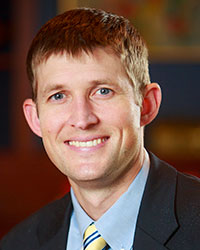To download a pdf of this news release, please click here.
St. Elizabeth first in world to offer new method that preserves rotator cuff
 Edgewood, KY - Eventually, people who suffer severe pain and stiffness in their shoulders due to arthritis may need total shoulder replacement surgery. It involves a long, painful rehabilitation that keeps patients away from work for weeks, if not months.
Edgewood, KY - Eventually, people who suffer severe pain and stiffness in their shoulders due to arthritis may need total shoulder replacement surgery. It involves a long, painful rehabilitation that keeps patients away from work for weeks, if not months.
Now, St. Elizabeth Healthcare is the first in the world to offer a new shoulder replacement surgery that preserves the patient’s rotator cuff, resulting in less pain and shorter recovery time. It’s called the Rotator Cuff Sparing Method for Total Shoulder Replacement, developed by Dr. Michael Greiwe, Orthopaedic Surgeon with Commonwealth Orthopaedic Centers, practicing at St. Elizabeth Healthcare.
“We’ve been working very hard to develop a shoulder replacement technique that reduces pain and speeds up healing,” says Dr. Greiwe. “This will be a significant game changer for patients and their surgeons.”
A game changer (and pain saver) for people with shoulder arthritis
During regular shoulder replacement, doctors cut and pull away the patient’s rotator cuff—the muscles and tendons located in the front of the shoulder—to gain access to the damaged ball and socket joint. After surgery, the patient faces a long recovery from the joint replacement, and also from a tendon repair to put the rotator cuff back in place.
With his new technique, Dr. Greiwe replaces the patient’s arthritic ball and socket, without cutting the rotator cuff. To do this, he approaches the shoulder joint from the back, instead of the front. Dr. Greiwe uses specially designed instruments to separate the muscles and tendons and access the joint.
“Our new method of replacing the shoulder joint by going in from the back, rather than the front, helps people immensely from a pain standpoint,” says Dr. Greiwe. “We eliminate potential complications, because we don’t cut the rotator cuff muscles.”
First patient’s experience is a success
Terrence Butler, a 67-year-old part-time court security officer from Greendale, Indiana, was Dr. Greiwe’s first patient. His right shoulder was ravaged by arthritis. He had trouble lifting heavy objects, throwing balls, and casting a fishing line— his favorite hobby.
Dr. Greiwe replaced Terrence’s shoulder on September 26, 2016. Terrence felt no pain after surgery and stayed in the hospital only one night, for observation. “I think I actually went fishing on the third day home,” says Terrence.
Terrence went to physical therapy for seven weeks. After three months, he considered himself fully recovered. “I feel good. I can do anything I want.”
Second patient compares new shoulder replacement to regular method
Dr. Greiwe’s second patient was Lenny Carbonia, a 63-year-old retired police officer.Lenny suffered from severe arthritis pain in his right shoulder that sometimes radiated down his arm and left him with little control over his movements.
After the new surgery on October 31, 2016, he felt very little pain. “In two weeks, I had complete range of motion. I could reach up or back. I could do anything.” Lenny reports some pain and stiffness during rehab, as he works his muscles, which is expected.
Lenny had regular replacement surgery on his left shoulder four years ago. He says the difference between the old and new method is “astronomical.”
“The regular surgery was extremely painful. After the new procedure, I was able to stop taking strong prescription pain medicine after one day. I healed faster.”
Benefits of New Rotator Cuff Sparing Method vs. regular shoulder replacement
Dr. Greiwe has used the new shoulder replacement method for five patients atSt. Elizabeth. They report better outcomes than patients who get regular surgery, including:
- Significantly less pain
- Reduced time on pain medication
- Quicker return to work and family obligations
- Shorter physical therapy and rehabilitation
Dr. Greiwe says this new shoulder replacement can be done on an outpatient basis. Total recovery time is about three months, versus six to nine months with regular surgery. “I’m excited that our new shoulder replacement method will spare people pain and benefit their lives,” says Dr. Greiwe. “Innovation in healthcare is critically important.”
For more information about the new Rotator Cuff Sparing Method for Total Shoulder Replacement and whether this method is best for your shoulder, please call (859) 301-2663 (BONE) or go to click here to schedule an appointment.